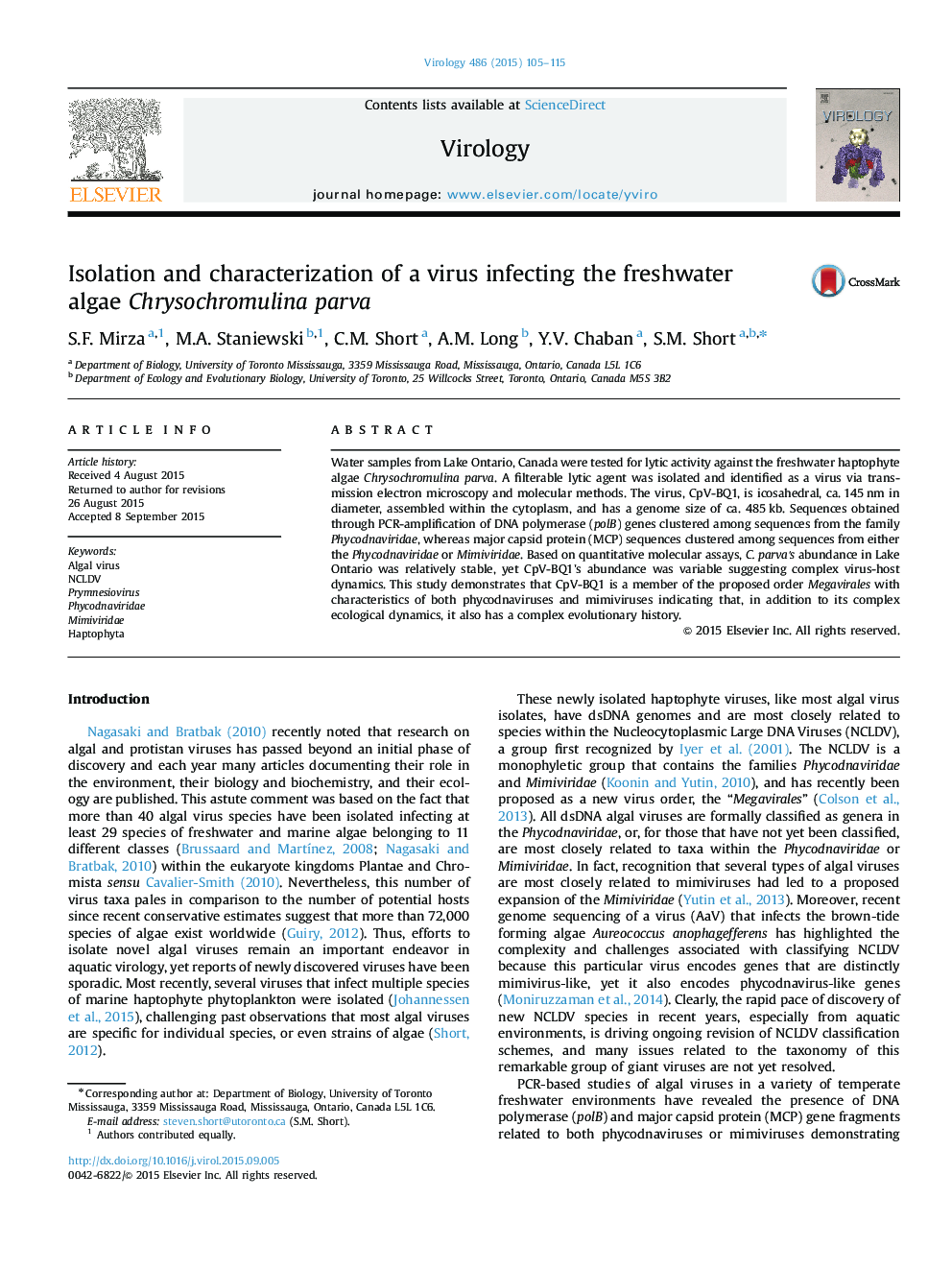| Article ID | Journal | Published Year | Pages | File Type |
|---|---|---|---|---|
| 6139340 | Virology | 2015 | 11 Pages |
Abstract
Water samples from Lake Ontario, Canada were tested for lytic activity against the freshwater haptophyte algae Chrysochromulina parva. A filterable lytic agent was isolated and identified as a virus via transmission electron microscopy and molecular methods. The virus, CpV-BQ1, is icosahedral, ca. 145 nm in diameter, assembled within the cytoplasm, and has a genome size of ca. 485 kb. Sequences obtained through PCR-amplification of DNA polymerase (polB) genes clustered among sequences from the family Phycodnaviridae, whereas major capsid protein (MCP) sequences clustered among sequences from either the Phycodnaviridae or Mimiviridae. Based on quantitative molecular assays, C. parva׳s abundance in Lake Ontario was relatively stable, yet CpV-BQ1׳s abundance was variable suggesting complex virus-host dynamics. This study demonstrates that CpV-BQ1 is a member of the proposed order Megavirales with characteristics of both phycodnaviruses and mimiviruses indicating that, in addition to its complex ecological dynamics, it also has a complex evolutionary history.
Related Topics
Life Sciences
Immunology and Microbiology
Virology
Authors
S.F. Mirza, M.A. Staniewski, C.M. Short, A.M. Long, Y.V. Chaban, S.M. Short,
